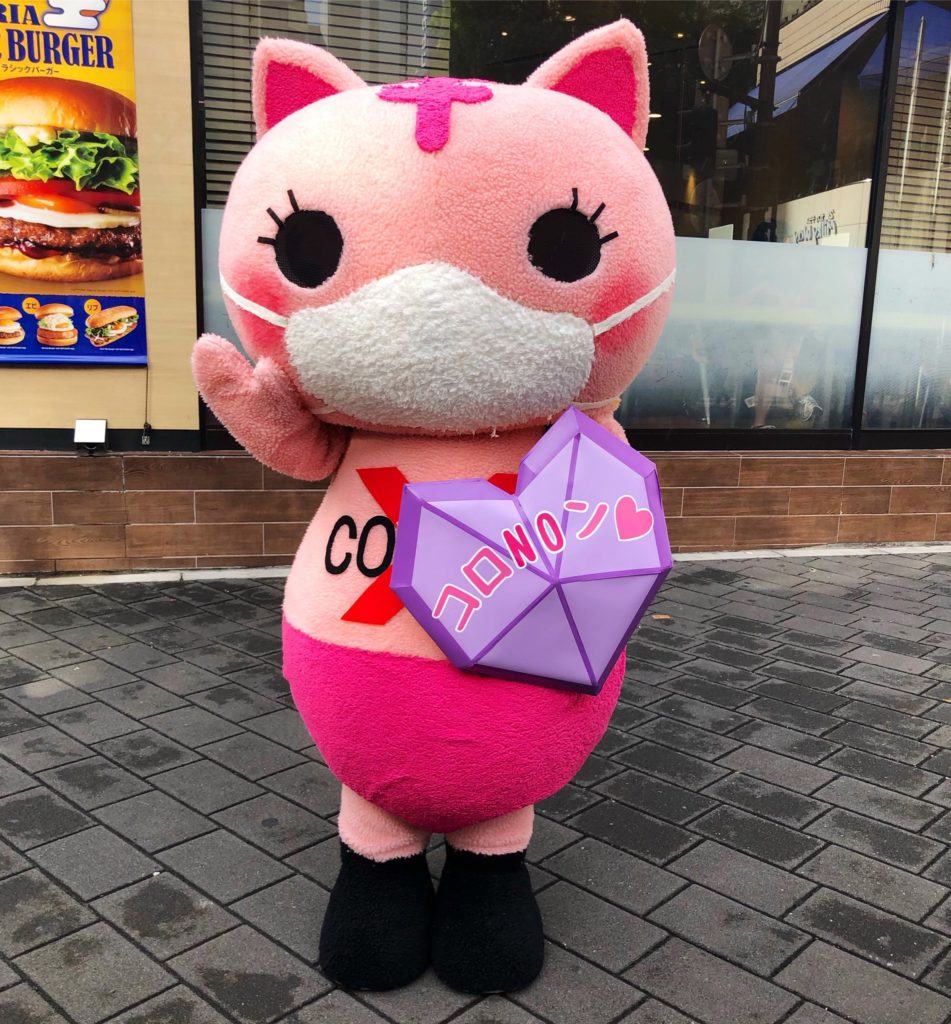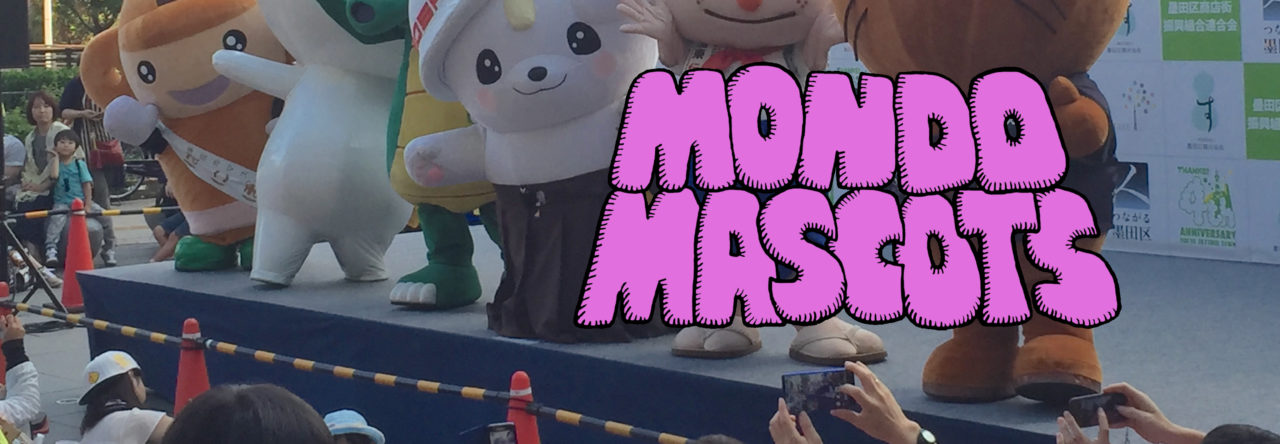I usually spend much of my free time in Tokyo tracking down yuru-chara (Japanese mascots), catching their appearances at department stores, street festivals, and train stations. Such events have naturally been cancelled this year, due to safety concerns surrounding COVID-19. This is just as well—it would be embarrassing for one’s death to be caused by an encounter with a six-foot tomato.
One of the last mascots I saw in February was Arukuma, the current champion of Japan’s “Yuruchara Grand Prix”, an annual poll to decide the nation’s favourite mascot. Arukuma, a rambling bear in an apple hat, was already wearing a mask.
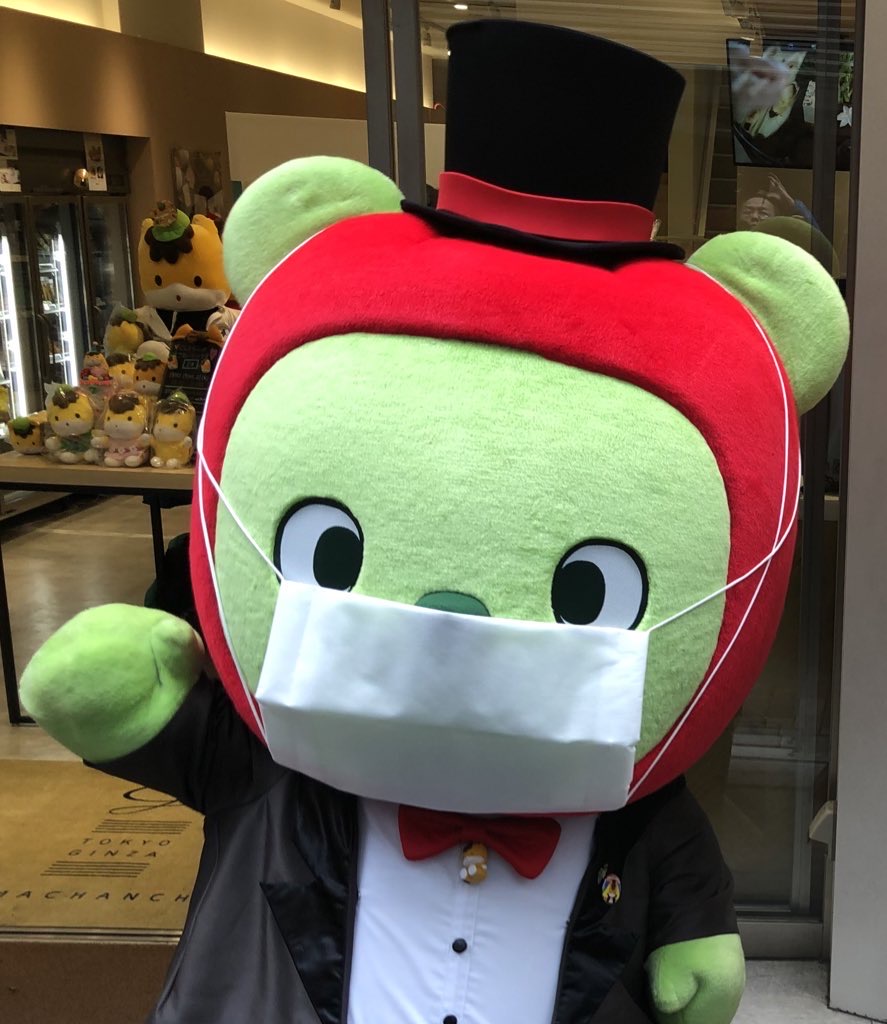
As the dreaded coronavirus began to dominate the news in the spring, Japan’s mayors and governors held press conferences to announce the measures that would be taken. Behind them, to soften the blow, illustrations of their various municipal mascots could be spotted.
As time went on, the mascots in the pictures began to wear face masks.
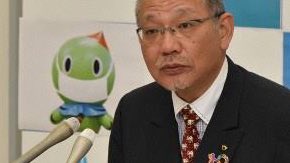
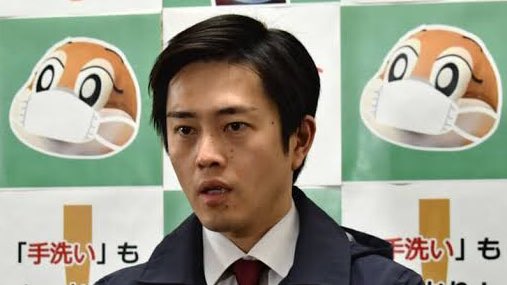
Regional mascots have been utilised throughout the country to illustrate signs promoting social distancing and hand washing.

Here are some flags I spotted near my home, featuring Gayan the ladybird (mascot of Tokyo’s Setagaya Ward) and Sanchawan, a dog with a tea bowl for a head (mascot of Sangenjaya, a district of Setagaya).

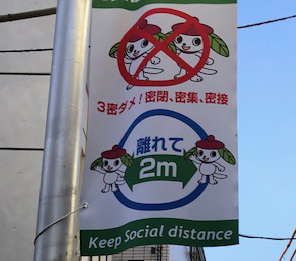
Without events to attend, Japan’s mascots kept busy by taking to the internet and posting videos to entertain housebound children.
Even sports mascots have been active on social media. The Chiba Lotte Marines’ occasional mascot, Nazo No Sakana (the Mysterious Fish) has posted several videos of surreal “hand-washing dances”.
While Japanese mascots were quick to adopt mask-wearing, it was in Thailand that the first actual Coronavirus mascot appeared. Covid-kun, a giant red COVID-19 particle, appeared in March to help educate the public about the deadly virus.

Although Japan has yet to create a fluffy COVID-19 particle character of its own, some existing virus-related mascots have risen in prominence this year. Quaran-kun, an airport quarantine mascot created in 2019, is a round yellow fairy with wings, a protective shield, and a Q on his forehead. He has had an unexpectedly busy year.
Shinjuku Awawa, a soap bubble superhero who encourages residents of Tokyo’s busy Shinjuku district to wash their hands, has also been very active in 2020, extolling the virtues of hand-scrubbing every day.
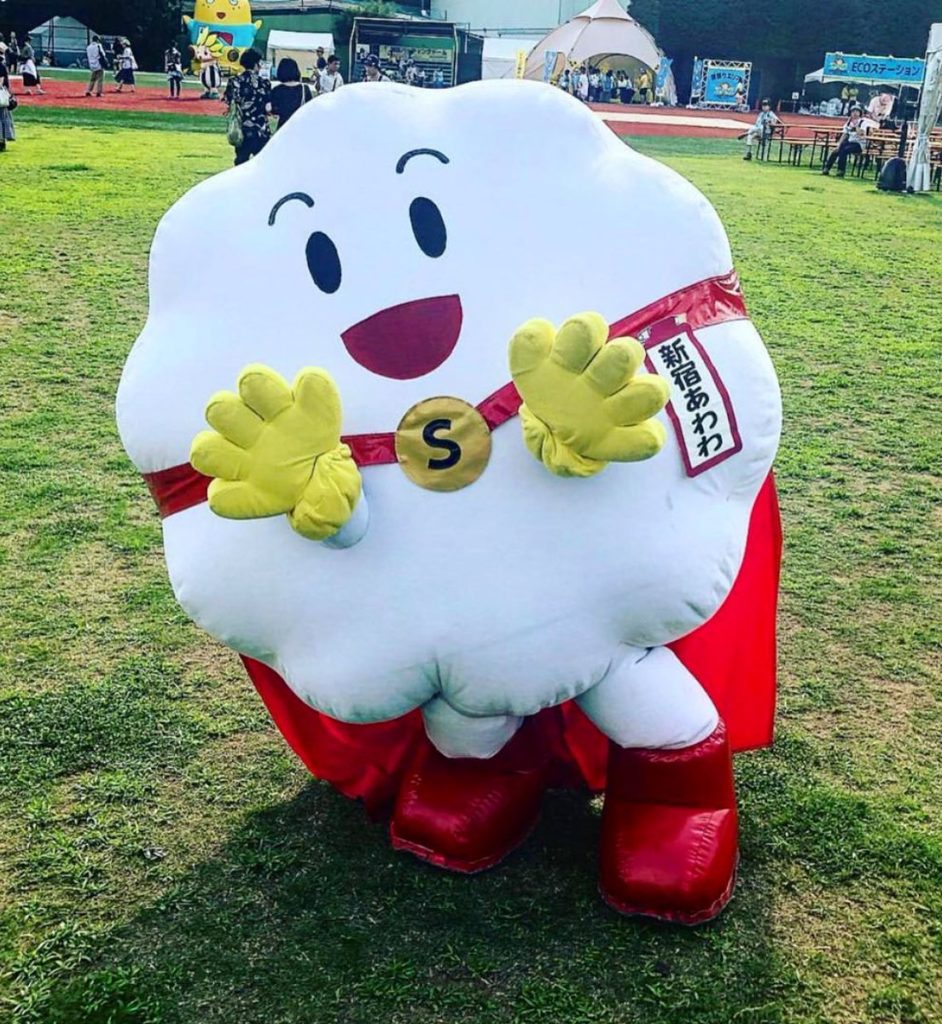
As the pandemic grew more desperate, Japan’s mascots even turned to traditional folklore for ideas. Amabie is an ancient yokai spirit who looks like a mermaid with long hair, three legs, and a beak. Legend has it, sharing images of her wards off disease, so numerous mascots have posted pictures of themselves wearing Amabie costumes.
In Kagoshima Prefecture, an Amabie mascot painted an enormous Amabie in a schoolyard. A drone took photographs of the giant portrait from above, and the pictures were put into pendants and given to the school’s students.
Recently, a statue of a different yokai was installed in Toyama Airport. Kutabe, a beast with a human face, is also said to prevent disease, so it is hoped the statue will keep Toyama visitors healthy.
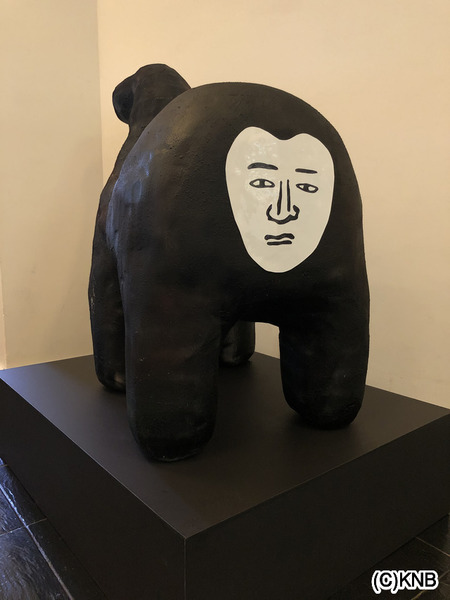
While the presence of these illness-eradicating mythological monsters brings comfort, relying on them alone to end a pandemic is unrealistic, so modern medical precautions are still dutifully observed. My most recent yuruchara sightings, mascots for two different towers, have been exercising caution. The first was Noppon Ani, one of the pointy pink brothers in dungarees who act as the mascots for Tokyo Tower. Noppon Ani was sensibly wearing a plastic protective visor. The other character I spotted was Sorakara-chan, the star-headed mascot for Japan’s tallest tower, the Tokyo Sky Tree, and she was sporting a face mask.
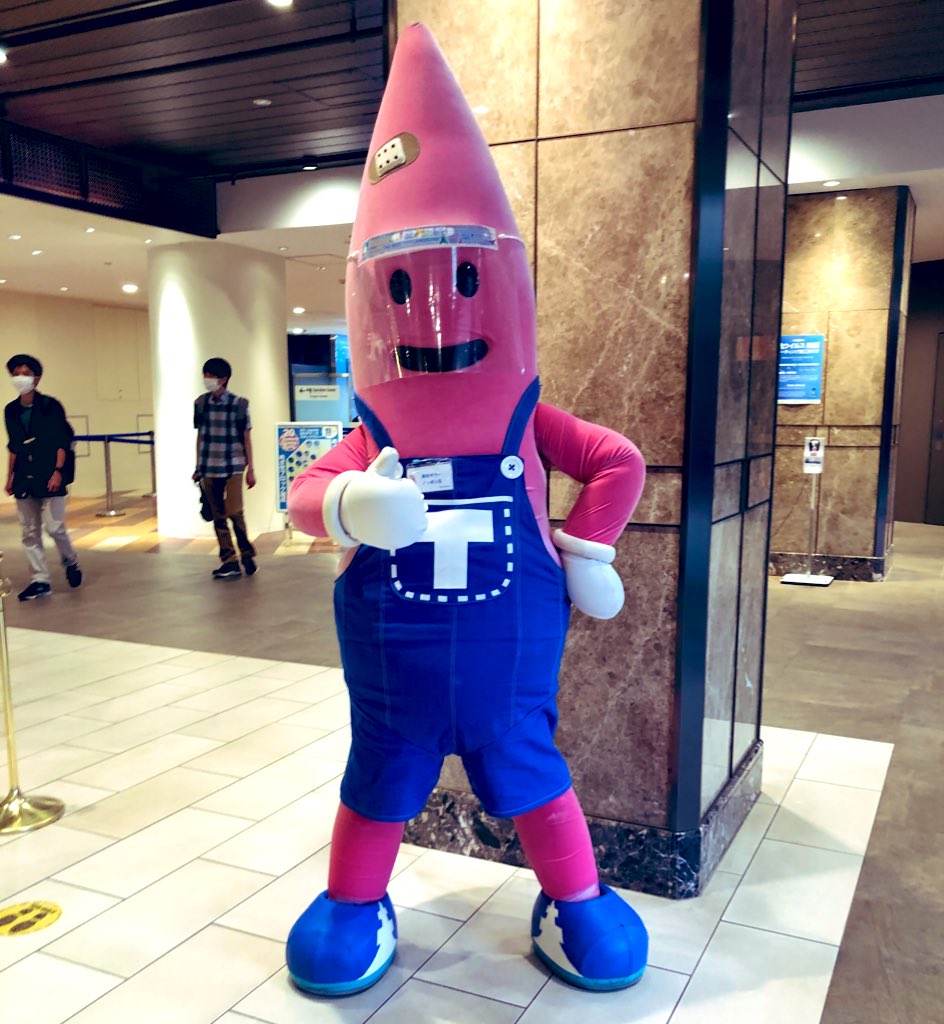
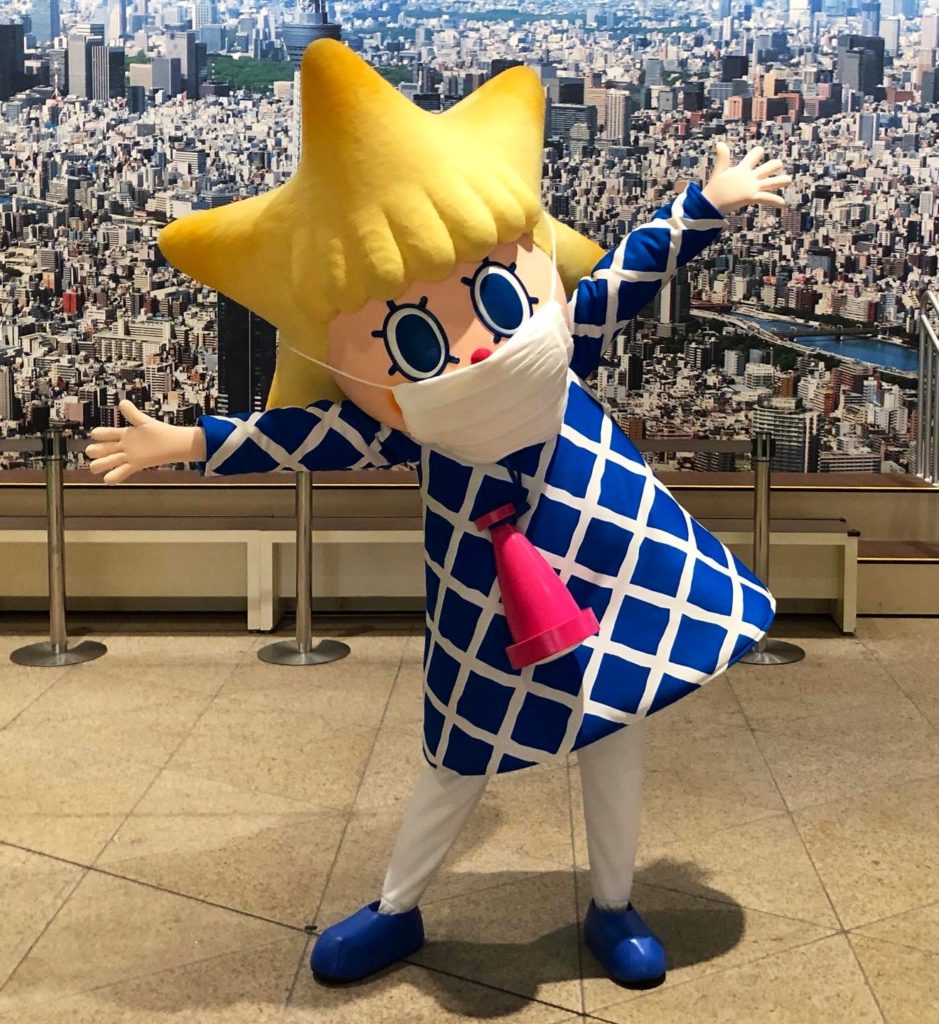
Finally, a new character dedicated to stopping the coronavirus, a mask-wearing pink cat named Koronon, has been handing out masks around Tokyo in recent weeks.
I hope people continue to follow the example of these conscientious mascots until the virus goes away.
